EXCLUSIVE ARTICLE |
||
|
||
EXCLUSIVE ARTICLE |
||
|
||
|
|
||||
|
“Goodbye Piccadilly,
Farewell Leicester Square” |
||||
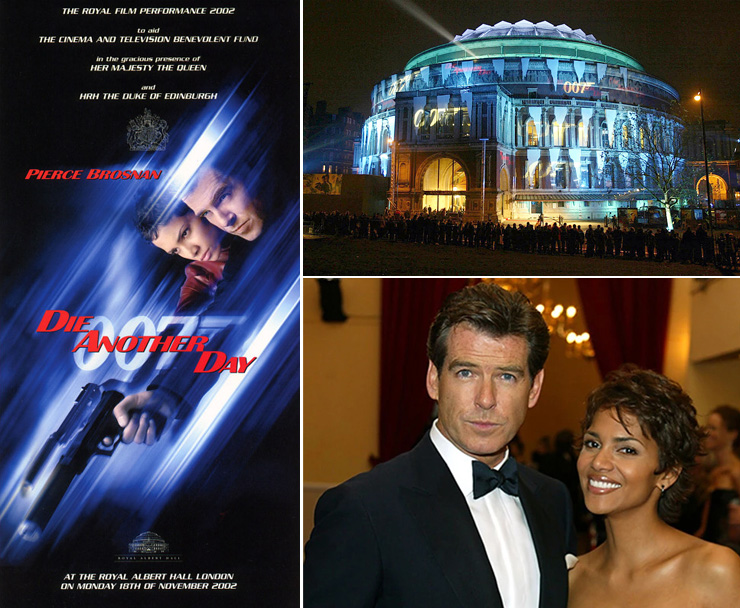 |
||||
|
EON Productions also invited many other significant alumni who had contributed to the James Bond films over the past 40 years. Guests included three former James Bond's - George Lazenby, Roger Moore and Timothy Dalton, alongside current 007 Pierce Brosnan and leading lady Halle Berry. Other former leading ladies also attending were Lois Chiles (Moonraker), Shirley Eaton (Goldfinger), Maryam d'Abo (The Living Daylights), Maud Adams (The Man With The Golden Gun & Octopussy). Other co-stars from Roger Moore's tenure as 007 included Vijay Amritraj (Octopussy) and Fiona Fullerton (A View To A Kill). Die Another Day's Toby Stephens, Michael Gorevoy, Rosamund Pike and Rick Yune were joined by former villains Richard Kiel (The Spy Who Loved Me & Moonraker), Julian Glover (For Your Eyes Only), and Burt Kwouk (Goldfinger, Casino Royale (1967) and You Only Live Twice). John Cleese (newly promoted to the role of Q after the death of Desmond Llewelyn), Judi Dench, Colin Salmon and Samantha Bond provided links to Pierce Brosnan's tenure as 007; whilst Shirley Bassey (Goldfinger, Diamonds Are Forever & Moonraker), Monty Norman (composer of ‘The James Bond Theme’), George Martin (Live And Let Die soundtrack composer) and John Barry (eleven-time James Bond composer) represented musical links to four decades of the James Bond legacy. Die Another Day's main title singer Madonna also attended with her then husband, film director Guy Ritchie. |
||||
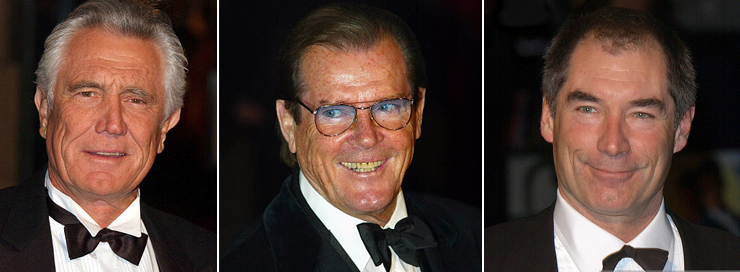 |
||||
|
Director Lee Tamahori was also presented to Her Majesty The Queen, alongside Die Another Day Co-Producers Michael G. Wilson and Barbara Broccoli, along with their mother Dana (widow of original James Bond film co-producer Albert R. Broccoli). |
||||
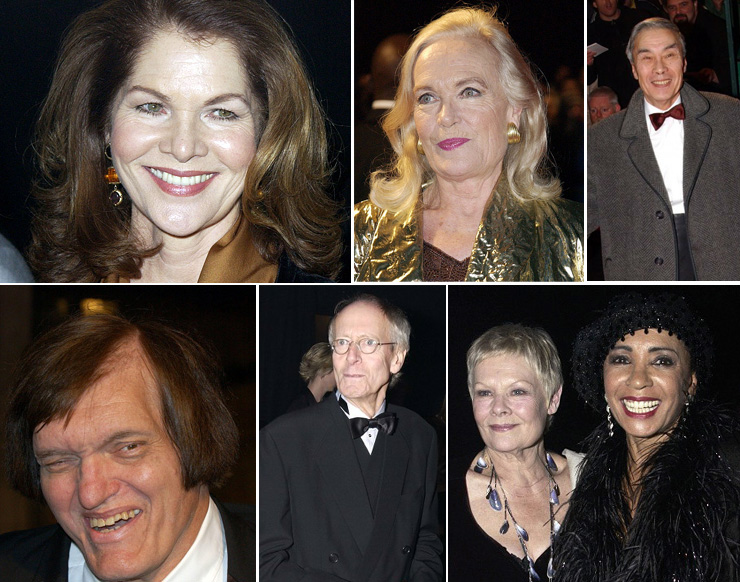 |
||||
|
In addition to the Premiere at the Royal Albert Hall there was also a special preview screening held simultaneously at the UCI Empire Cinema in Leicester Square, followed by several regional charity Premieres and after show parties on Tuesday November 19, 2002. Die Another Day had regional Premieres at the ODEON cinemas in Newcastle and Birmingham, and Warner Village cinema in Plymouth. |
||||
|
||||
|
Die Another Day then opened at the ODEON Marble Arch on Friday November 22, 2002, where it played for eight weeks. Despite some less than positive reviews Die Another Day quickly became the most successful James Bond film to date (when not adjusted for inflation), taking £1.4 million in the UK in its opening weekend. Die Another Day played at the Empire Leicester Square (then part of the UCI chain of cinemas, and now part of the Cineworld group) for thirteen-weeks from Tuesday November 19, 2002. For the first seven weeks Die Another Day was playing simultaneously in the main 1,330-seat screen one, and smaller 349-seat screen two - which gave the cinema seven separate performances each day. From Wednesday January 8, 2003, Die Another Day played only in screen two, and then the 77-seat screen three at the end of its run. Die Another Day was the first James Bond film since Thunderball not to screen at the ODEON Leicester Square during its Premiere engagement in London, although it did later play at the adjoining five-screen ODEON Mezzanine complex for nine-weeks from Friday January 31, 2003. |
||||
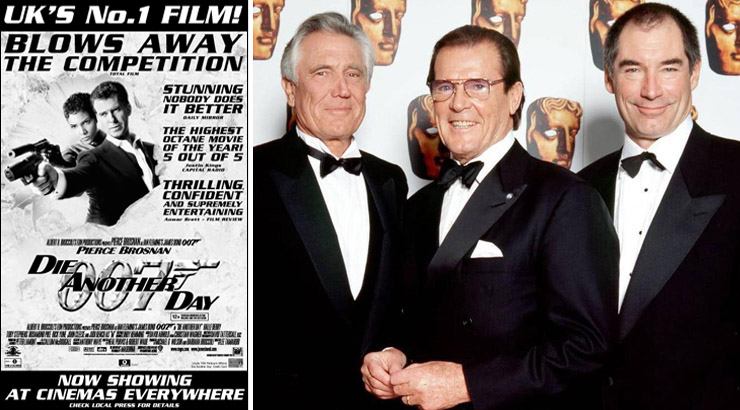 |
||||
|
James Bond's 40th Anniversary was also celebrated in London with a BAFTA Tribute hosted by Michael Parkinson (1935-2023) on Sunday November 17th (the day before the Die Another Day Premiere), which was later screened on BBC1 on Saturday December 28, 2002. The star-studded occasion was held in the presence of four incarnations of Ian Fleming's debonair spy - Pierce Brosnan, Roger Moore, Timothy Dalton and George Lazenby who each discussed their own interpretations of the role, with Sean Connery adding his thoughts in a pre-recorded interview. Halle Berry, who played American agent Jinx in Die Another Day, talked about the re-creation of the iconic beach scene featuring Ursula Andress from the first James Bond film Dr. No in 1962. |
||||
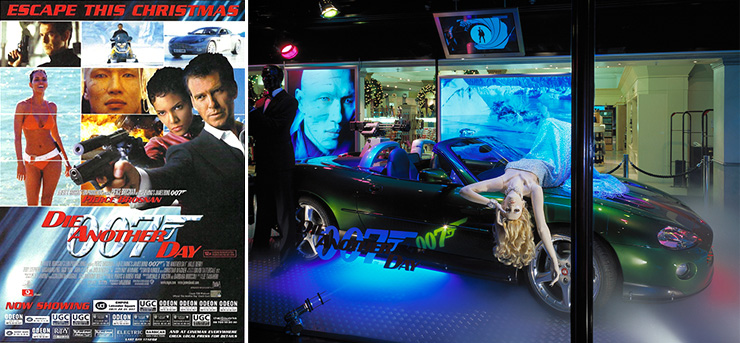 |
||||
|
Christmas 2002 became the most profitable holiday release period for any James Bond film since the record-breaking debut of Thunderball in 1965. Londoners could also see a spectacular tribute to the official James Bond films in special film-themed window displays showcased at the world-famous Harrods store in Knightsbridge. The window displays featured vehicles, costumes and props from 40 years of James Bond films, along with other expensive items then on sale at the prestigious Knightsbridge store. Die Another Day then made its DVD debut in June 2003, in a two-disc special edition with many additional features that were not carried over to later home media releases. |
||||
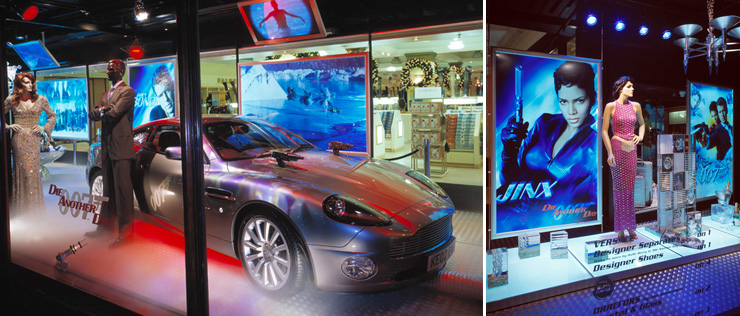 |
||||
|
Despite the enormous worldwide success of Die Another Day, producers Barbara Broccoli & Michael G. Wilson were aware of the largely negative reviews, and criticism of the story and its more over-the-top elements, particularly the poorly executed computer-generated kite-surfing sequence. In 1999 EON Productions had finally acquired the rights to film Ian Fleming's first James Bond novel CASINO ROYALE. Although Pierce Brosnan's four James Bond films had grossed over one-billion dollars at the box-office, and he had become arguably the most publicly popular actor to inhabit the 007 role since Sean Connery, EON did not feel they could do justice to Ian Fleming's origin novel with their current star. In 2003 EA Games released Everything Or Nothing, a computer videogame which used the likeness and voice of Pierce Brosnan as James Bond, and proved to be his last official association with the character. On February 23, 2005, it was announced that Casino Royale would be the title of the 21st James Bond film, and Martin Campbell who had helmed Pierce Brosnan's debut as 007 GoldenEye (1995) would return to direct, although its star would not. |
||||
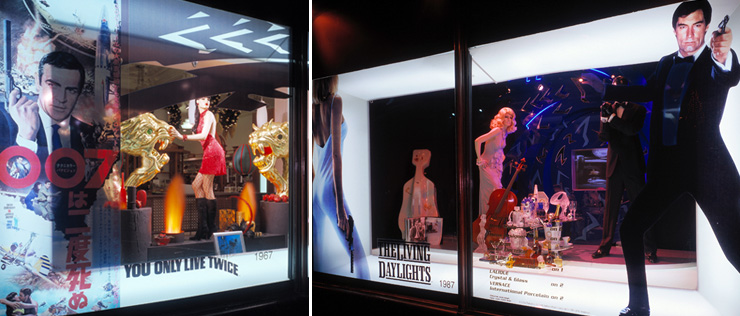 |
||||
|
“BOND at 50” |
||||
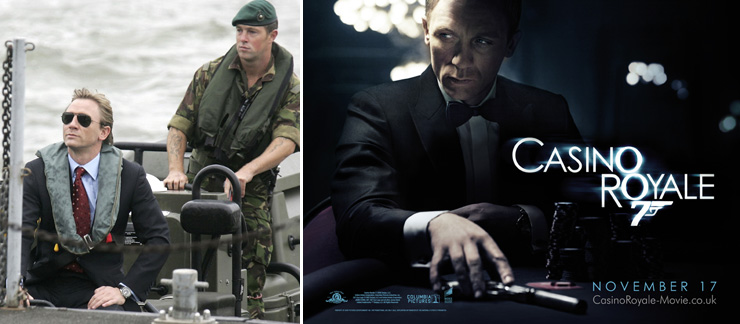 |
||||
|
“You Know My Name” |
||||
 |
||||
|
|
||||